©author(s)
Journal of Migration Affairs
Vol. III(2): 90-111, March 2021
DOI: 10.36931/jma.2021.3.2.90-111
Pdf Issue: Mapping Memory Home and Belonging.pdf
Introduction
Memory plays a vital role in the context of migration. It impacts the views, opinions, ideologies, beliefs, and perceptions of the people, further influencing every other sphere of their lives. For displaced individuals, memory can sometimes be the only process that provides continuity across space and time. Memory studies have so far received little attention in the study of Burma repatriates. This paper seeks to interpret the memories of Burma Repatriates as it plays an important role in understanding the historical and political context of their return from Burma and their experiences of living in India with the dual yet ruptured identity of being a repatriate and Indian. Through the oral narratives of the repatriates living in three camps at Kamarhati, Bonorini Abasan and Ghola in the outskirts of Kolkata in West Bengal, this paper tries to understand how the repatriates live with the nostalgia of the land they have left behind forever by preserving the key cultural markers of their Burmese identity. The paper will particularly focus on different aspects of material and sensory memories, apart from memory in general of their migration from Burma. It tries to understand how memory defines what constitutes home and belonging for them in their changed circumstances of home and homeland.
The paper is organised into four sections. The first section introduces the historical processes under which migration took place from undivided India under British rule to (then) Burma and the conditions under which they were forced to leave Burma and return to India, mainly in the early 1960s. The second section briefly describes the process of resettlement of Bengali-origin repatriates in the state of West Bengal. This section is divided into three sub- sections, each discussing one repatriate colony where we conducted interviews. These interviews focused on their memories of Burma and how they (memories) influence repatriates’ lives. In the third section, we pick some more common threads from the memories of the repatriates and how they are struggling to create a new identity for themselves. In the last section, we make some concluding remarks.
Background: India-Burma-India Migration
Cross-border migration is a major phenomenon in Southeast Asian history. During the nineteenth century, there was a rapid extension of British colonisation in South East Asia. After three successive wins in the Anglo-Burmese wars (1825, 1852 and 1885), the British made Burma1 (now Myanmar) a part of their empire (Woodward 1907, 317). British rule in that country lasted from 1824 to 1948. Migration between India and Burma surged because the British adopted a policy of co-dependent trade throughout its various colonies. After the British annexation of Burma, the country’s rice industry expanded due to the disruption in rice supply following the American Civil War. Cheng Siok Hwa writes in his article-
The American Civil War and the abolition of slavery disrupted the flow of rice from the Carolinas. Many padi fields and much expensive equipment were destroyed in the fighting and through neglect; the negro slaves, once liberated, were reluctant to work in the malaria-infested, swampy rice-fields. (Proctor 1882 in Hwa 1965, 74)
As the production and export of rice rose steadily in Burma, the demand for labour for the industry increased. With the extent of domestic labour being inadequate for the purpose, Indians migrated from various provinces of India to fill the gap. Most of these early migrants to Burma, who moved there in search of a livelihood, were poor. Even before World War I, major Burmese towns were occupied by large numbers of Indian labourers.
The British colonisers were largely responsible for this surge of Indian workers in Burma, encouraging ordinary working people of India to migrate to Burma for a living. The encouragement of migration from India to Burma and increasing the number of indentured labourers was a conscious decision of the British government as their main objective was to expand their colonies in Southeast Asia. Most of the Indians who migrated to Burma at this time were from the Bengal Presidency and Madras Presidency of British India. Apart from labourers, middle-class intellectuals and engineers, doctors, lawyers, teachers, clerks and other professionals headed to Burma under British patronage (Mukhopadhyay 1965, 398). They took administrative jobs in various government offices in Burma since few Burmese people knew the coloniser’s language. Umaprasad Mukhapadhya’s (1965) travel writing Burma Muluke bears testimony of this Indian migration in Burma. Prior acquaintance with bureaucracy and the English language made Indians eligible for these jobs.
In Philip Nolan’s ‘Report on Emigration from Bengal to Burma and How to Promote it’ (1888), one can get a clear picture of the specificities and features of migration from Bengal to Burma. According to Nolan, the movement of the labouring class from Bengal to Burma had been ongoing for a considerable period of time and was increasing day by day; the government’s target was to accelerate the migration rate without changing the way the indentured labourers were recruited. Labourers, too, were keen to migrate as they had heard of the good prospects in Burma. As Nolan says in his report, ‘In Burma any labourer can in a few years earn sufficient to establish himself as a cultivator, paying only the public revenue, assessed on alike at a moderate rate, and absolutely free from all danger of disturbance’ (Nolan 1888, 9-10). The British administration encouraged migration for another reason. As with other colonies, they sought to maximise their profits from Burma, and migration enabled them to earn more revenue from labour tax. There was a certain kind of tax for both bachelor and married labourers, which was a major source of income for the British in Burma. It is worth noting that Indian immigration to Burma increased in the nineteenth century after the abolition of slavery in British colonies. However, migration from India to Burma fell during the 1930s and 40s, particularly after the separation of Burma from India in 19372. The 1930s also witnessed anti-Indian riots in Burma. India and Burma gained independence from British rule in 1947 and 1948, respectively. However, tensions kept rising in bilateral ties between them since the 1950s despite negotiations by the Indian government to resolve the issue of citizenship and other rights for Indian-origin migrants in Burma (Mohan 1955).
In 1948, the country went through a period of ethnic strife and deep unrest; finally, in 1962, the military under General Ne Win staged a coup and took over the country’s governance. The land was nationalised in 1960, which meant that the property of all foreigners residing in Burma, including Indians, was nationalised. This decision created widespread instability. The nationalisation of all property during the 1960s was another way of undermining Indian domination. The Burmese government even nationalised small-scale businesses, which impacted many Indians living in Burma. With the government confiscating the property of Indians without providing any compensation, an active drive was launched by the military- led government to expel Indians from Burma. The demonetisation of currency notes in 1964 by the ruling military junta compounded their plight (Holmes 1967, Lubina 2016).
These policies of the Government of Burma led to an exodus of people of Indian origin to India. The Indian government sought to rehabilitate the affected people. In the states of West Bengal and Tamil Nadu, rehabilitation departments were established to assist the repatriates. According to the information handbook of the rehabilitation department of Tamil Nadu, the arrival of repatriates started in 1963; 1.4 lakh people came back to India from Burma as repatriates till 1989 and temporary transit camps were constructed for their rehabilitation (Department of Rehabilitation 2005). The Indian government took on the responsibility for the journey and resettlement of the repatriates in India. According to Renaud Egreteau, since the 1960s, many repatriates have been found on the outskirts of Kolkata, Madras and Vellore, and the national capital New Delhi (Egreteau 2013,12), which leads us to believe that the government initially arranged for the repatriates to live on the outskirts of these large cities in India. Transit camps were set up by West Bengal and some other state governments to rehabilitate repatriates. A separate resettlement system was established to assist returning migrants (but not their descendants born on Indian soil), providing easy access to bank loans for education, employment, starting a business, purchasing land, and building a home. The repatriates from Burma were issued a certificate by the All-Burma Indian Congress; the Indian embassy at Rangoon (now Yangon) also issued an emergency certificate. This emergency certificate was supposed to give them access to free food and accommodation in India, in addition to travel allowance (Mahanirban Calcutta Research Group 2011). This process initially lasted for about five years.
Repatriates from Burma in Bengal
The forefathers of most of the repatriates studied for this paper were originally from East Bengal of undivided British India. When asked why they did not try to go to East Bengal (present-day Bangladesh) instead of India while leaving Myanmar, they answered that it did not matter as they had migrated from undivided India. They did not have any special affinity with Bangladesh. Their home was Burma, and the rest, Bangladesh or India, were alien lands. For them, when their own country forced them to leave, the only option was to follow the route everyone else was taking. India was the nation that was sending ships and aeroplanes to bring back ‘Indians’. Besides, many of them had relatives in Calcutta (now Kolkata). That also influenced their choice of settling in the city. Upon arrival in India, most of the repatriates were dispatched to semi-urban areas. The ‘Bengali’ repatriates used to work as merchants or run their small businesses in Burma. These immigrants, accustomed to urban life, were thus resettled in camps near the city where they were more likely to get the kind of jobs and other facilities unavailable in rural areas.
Still, after they came to India, they were not properly rehabilitated. The official claims vastly differ from the reality on the ground. According to the repatriate residents of the Kamarhati colony, though their housing and employment were promised long ago, the government process was very slow. The official documents recorded that their accommodation had been arranged, but in reality, they had to stay in dilapidated houses in Karmarhati for a long time. Though the government did undertake some measures for the Burma repatriates initially, they proved to be quite inadequate. Some of them started small businesses or did odd jobs as they started their new lives in India. Due to lack of aid, they had to face many obstacles in earning their living. The promise of a ‘home’ made by the government remained a promise for many decades. Moreover, they were often abused in many ways by the local people.
The repatriates who have settled in and around Kolkata are mainly concentrated in the Kamarhati Burma colony and Barasat Burma colony. Barasat hosts hundreds of families, and this colony seems like a miniature Burma – the older one that the repatriates had left behind. The camp in Kamarhati is in poor condition due to a lack of planning and a proper sanitation system. Adjacent to the Kamarhati Burma colony is the Ghola colony, where a few repatriates have settled. Some of the families living in Ghola were initially in Kamarhati. As recently as 2017, the state government of West Bengal (under the Trinamool Congress) rehabilitated several Burmese Bengali families from Kamarhati to Bonorini Abasan, 5-6 kilometres away. The shifting was completed in 2019. Those who moved to this new accommodation from the Kamarhati Burma colony include residents of Uday Villa, a cooperative society for women in which eminent personalities were involved.3 The history of Uday Villa is a very complex one and beyond the ambit of this paper. Still, it is important to mention it, as many Kamarhati Burma colony residents worked in this cooperative society which became an important means of livelihood for many repatriates, and how repeated relocations affect the sense of belonging and identity.
In the subsequent three sections of the paper, we would discuss how, based on their memory, the Burma repatriates living in Kamarhati, Bonorini Abasan, and Ghola colonies construct their migration narratives.
The Kamarhati Burma Colony
The history of the Kamarhati colony is a fascinating one. The camp was originally built for the war prisoners of the 1962 Sino-Indian war. One member of the colony, Suraj Dey, even remembers seeing Chinese characters scribbled on the various walls of the building. He pointed to a worn-out bluish-grey door where Chinese characters were apparently scribbled; with time and repair work, the characters were wiped out.
Image 1: This is the door where the Chinese characters were apparently inscribed. We could not take a full-frame picture of the door because of the condition of the corridor where it stands. This close frame shows the left side of the door where the Chinese characters were scribbled. Photograph by Aratrika Ganguly, 12 August 2018
Another colony resident, Jatindra Nath, gave us an idea of what he considers his native land –Burma – and the conditions of life for South Asian people there. He reminisced about his family’s good life in Burma and how repatriation to India has adversely impacted his family. He now earns his living as a toto rickshaw4 driver. He spoke of how migrants like him have tried to keep in touch with Burma by serving as tour guides to Burmese tourists in India. These tourists are mainly Buddhists who come to visit the various Buddhist religious places. However, the guide’s job is temporary; they depend on odd jobs for the rest of the year. Jatindra Nath and his brother were unable to continue their education after arriving in India, and the government took years to provide them with accommodation. They have been living in rundown accommodations in the Kamarhati Burma Colony. None of the governments that have come and gone cared to rehabilitate them in livable condition promised to them at the time of repatriation. Some had to wait till 2019 to get a simple apartment to call their own. The Kamarhati Burma Colony was supposed to be a temporary shelter for these repatriates, but unfortunately, for many of them, it became their permanent abode (like Jatindra Nath’s brother who died there).
The repatriates suffered from a deep socio-politico-cultural crisis as they tried to settle in their ‘new’ society. Loneliness became another by-product of migration. This caused the repatriates to form their own community-like set-up, as seen in the Kamarhati Burma colony. They organise their festivals or pujas linked to Burma, and these events are a perfect amalgamation of both their receiving society and the society they came from. One of the families of the Kamarhati colony (who wished to remain anonymous) cooks a blend of Burmese dishes and traditional Bengali items (that they learnt either after coming to India or from their mothers or grandmothers) on festive occasions. When we interviewed one family, the hostess welcomed us with traditional beverages and food from Myanmar. She was even wearing a longyi, the traditional Burmese dress for both men and women.
Image 2: Jatindra Nath standing beside his toto rickshaw Photograph by Aratrika Ganguly, 12 August 2018
Several other residents offered us packaged foods from Burma. The Kananga family provided us with the main ingredient of laphet thoke – ‘tea leaf salad’, a popular Burmese delicacy – and Burmese coffee. It was the first time we were trying out Burmese food, and we were astonished by the similarity of the fusion food culture we find in India, where Southeast Asian and Chinese cuisines have become a part of our life. The Kananga sisters, Uma and Lakshmi, also showed us how to make laphet thoke and the care with which it is prepared; that demonstrated how proud they still feel to be associated with their Suvarnabhumi (land of gold) – Burma. It may be a mere food item for us, but for them, there are complex sensory experiences associated with it. It is a piece of Burma that they carry with them, a piece of their motherland that no one can snatch away from them. For them, food spans the gamut from biological to psychological to cultural to social. With food comes their sense of identity. Here, food is not just about sticking to one’s roots, but also about bringing the roots to an alien soil and, through this, avoiding becoming uprooted in every sense.
The celebration of food thus becomes a major cultural expression that helps people stick together. Therefore, when the people speak about how they celebrate Burmese festivals with special foods or make Burmese dishes during Indian festivals, it is essentially a way of showing their cultural heritage. Being repatriates, they had to fight for their prestige and status in their host society, and celebrating a festival that includes Burmese dishes or celebrating Burmese festivals gives them a sense of identity and status in their host society. When a person is uprooted from one’s society, she not only faces dislocation and, therefore, disorientation but is also never fully accepted by the host society. Migrants seldom feel at home at other places, in other societies, and distant lands. Thus, sticking together with other repatriates and celebrating the culture they have left behind gives them hope and peace.
Another person we met was a neighbour of the Kananga sisters and the daughter-in-law of Sushila Nag. She had shifted to Bonorini Abasan by the time we went to Kamarhati Burma Colony. Like her neighbour Jatindra Nath, Sushila Nag is a guide for Burmese tourists. Her daughter-in-law told us how her mother-in-law cooks various Burmese dishes with love and care and how these dishes made her fall in love with Burmese culture. Our interactions with Sushila Nag’s daughter-in-law, who originally hails from Kolkata, and Jatindra Nath’s wife (both unwilling to share their names) made us realise how one person can imbibe memories from another through the gastrointestinal tract. In addition, Mrs. Nag’s daughter-in-law spoke to us as though she had lived in Burma. Her growing acceptance of her in-laws’ culture has made her enthusiastic about the fusion of cultures they have embraced. Jatindra Nath’s wife showed the same attitude.
Image 3: Some of the ingredients of laphet thoke, at the Kananga sisters’ house. Photograph by Aratrika Ganguly, 12 August 2018.
Image 4: The Kananga sisters in Kamarhati Burma Colony. Photograph by Aratrika Ganguly, 12 August 2018
Image 5: The present state of the Kamarhati Burma Colony. Photograph by Aratrika Ganguly, 12 August 2018
Bonorini Abasan
In the Kamarhati Burma Colony, we discovered that most families living in Kamarhati had been rehabilitated in Bonorini Abasan by the Mamata Banerjee-led state government. At Bonorini Abasan, we heard another narrative of memory and migration intertwined together. The repatriates evoked memories of the Kamarhati Burma Colony; they spoke about how they continue to visit their empty quarters in Kamarhati. Many who had settled in Bonorini felt nostalgic about the home they had left behind in Kamarhati. The Kamarhati Burma colony had provided them with home, identity, and livelihood – at a point when everything had been taken away from them. We could see how the memories of the Kamarhati Burma colony lent meaning to their ever-changing life. As they spoke of their memories of both Burma and Kamarhati, we understood that all these memories are, in fact, stitched together into a collective form of memory and nostalgia. These fractured memories, when joined, give us valuable insights into the disciplines of both migration and memory studies. ‘Memory, in all its forms, physical, psychological, cultural, and familial, plays a crucial role within the contexts of migration, immigration, resettlement, and diasporas, for memory provides continuity to the dis-locations of individual and social identity … a nation in large part formed by migration and the memory of migrants’ (Creet and Kitzmann 2010, 3).
Those we met during our fieldwork in Bonorini Abasan showed us artefacts they had brought from Burma while visiting friends or relatives or travelling to work. Another source is tourists from Burma. As noted above, many repatriates, well-versed with the Burmese language, act as tour guides in places like Bodh Gaya, which many Burmese visit as tourists. This helps them not only to earn some money but also to connect with friends from Burma. Sometimes the tourists also give them some material gifts brought from Burma. Such gifts may be instant noodles or other packaged food items. The Burmese tourists probably find it easy to gift food items knowing how happy they will make the repatriates. For the repatriates, such gifts are more than material items – they are still a part of their culture.
Another gift item is thanaka which is made from ground bark and resembles sandalwood. Popular among Burmese as part of their traditional daily beauty regime, it is still used for its excellent properties of keeping the skin free from blemishes and for being a natural sunscreen. Thanaka is related to olfaction. For example, Pakhi di5 – as the other repatriates of Bonorini fondly call her – observed that she really missed the ‘smell’ of ‘Burma’. The ‘smell’ does not pertain only to the psychological essence of Burma; it refers to the olfactory sensation that she misses. One cannot store or transport ‘smell’ in that sense, but the smell can evoke and trigger waves of memory as the olfactory memory tries to create episodic memories in our brain (Sandoiu 2020). Also known as the ‘Proust effect’6 in the neuro-scientific study, this sensation can help revive suppressed memories and be a powerful tool in memory and migration studies. Therefore, when Pakhi di or others talks about the ‘smell’ of thanaka or Burmese teak or mohinga (a fish-based soup with rice noodles, regarded as the national dish of Burma) or laphet thoke or the incense stick used in pagodas, all of these collectively invoke the ‘smell’ of Burma in the repatriates. This olfactory sensation does not pertain only to food or aromatic items like thanaka but also the whole essence of the city she grew up in.
Pakhi di told us about her achievements in sports and athletics in Burma. She had won several accolades and awards for her talent. It gave her the feeling that she was a part of Burma as she played basketball (and other sports) and, in this way, she represented ‘her’ country.
For repatriates like her, Burma is still their country, which evokes a feeling of belonging. It is also an idea, an identity that is and will always be present in their memory. The sensory channels of people like Pakhi di or Ajoy Banerjee, another repatriate from Burma (Pakhi di works in his house as a helper), are connected to their memory channels; forgetting is slowly creeping in, but the memory still has a grasp that cannot be washed away by the passing years. Ajoy Banerjee, who was in the Indian navy, remembered how his parents would not allow him to play with other children when they lived in Burma because of the religious orthodoxies of his mother, particularly related to certain food items. Banerjee hated this segregation; he felt at ease in his friends’ homes, and he spoke of being devastated at having to part ways with that golden country. His story points to the influences of host societies and absorption of new ideas and practices – how the second or other generation migrants differ from their parents and ancestors in their dress, culinary preferences, language, and several other ways. Further, when a person who has imbibed both these cultures migrates or re-migrates, he/she could be seen as representing the best of these cultures. Being detached from one’s roots, one falls into the crisis of self-identity and, therefore, the sole or real identity that stays with the migrant is memory. These memories amplify and intensify with material objects related to the migrant’s origin. These materials are intrinsically associated with the places they come from and, therefore, they become the anchor of memory.
Everyone we interviewed showed us their Foreign Registration Card (FRC) and proudly exclaimed that they were repatriates, not refugees. The FRC is legal proof of their repatriation, but, more importantly, it acts as the last legal document that binds them with Burma, both as a nation and a concept. This document has been kept safely by the repatriates all these years for two reasons. First, they want to be recognised as documented citizens of India and not undocumented migrants. Secondly, the document helps in reminding them of their roots, their homeland. This document is at once a historical record and, at the same time, it is a strong memory tool.
Memory and forgetting are always in a tug of war. Still, often memory wins in innumerable and exceptional ways with the help of material objects that migrants carry with them to help reconnect with their lost identity. These material embodying memories can be any object: an official document, some identity proof, some pictures or some old letters or notes. The FRC that Pakhi di showed us (see image 8) or the decorative or everyday items we saw in Ajay Banerjee’s home are the best examples of how memory in the form of material can keep one’s sense of identity alive.
Image 6: Ajay Banerjee. Photograph by Pratim Das, 17 September 2018
Image 7: A certificate from Burma (belonging to Pakhi di’s relative). Photograph by Pratim Das, 17 September 2018
Image 8: The inner pages of Pakhi di’s Foreign Registration Card (FRC). Photograph by Pratim Das, 17 September 2018
Image 9: A handcrafted item from Burma in Ajay Banerjee’s apartment. Photograph by Pratim Das, 17 September 2018
During our fieldwork at Bonorini, we met several repatriate families who used to work in Uday Villa. They showed us mats, ceramics and other items produced there. Some of them were older women whose mothers or grandmothers had worked there when they were settled at the Kamarhati Burma Colony. This cottage industry provided livelihood to women from the Kamarhati Burma Colony and also other places. It was evident that these products they or their immediate ancestors made in the cooperative society helped to create new memories that are a part of the chapter they have left behind at the Kamarhati Burma Colony.
Image 10: A mat made by one of the women workers of Uday Villa. Photograph by Pratim Das, 17
Ghola, Sodepur
The repatriates or their families had once migrated to their Suvarnabhumi (Burma) to gain material success, and they achieved it indeed. But they had to return empty-handed and start from scratch in India. This not only deprived them of their material possessions but also depleted their mental strength. Gita Bose, a resident of Ghola, Sodepur, told us how they were living in a hand-to-mouth condition, whereas in Burma, her father was an officer in a sugar plantation, and they were used to a luxurious life. Gita Bose has been working as a tailor along with her mother for the past few decades. After they settled in India, their relatives tortured them. Gita sacrificed her life for her family; she did not opt for marriage or children for the sake of providing for her many siblings and old mother. It is a powerful example of how migration and uprooting can drastically affect a person’s future. Gita described in a choked voice her life in Burma: how her mother never had to walk or use public transport in Burma as a car would be waiting for her whenever she needed to step out; her own carefree days spent with friends in the beautiful district of Zeyawaddy, and many other pleasant memories of her childhood, of her father, of ‘her’ Burma. They lost all their wealth as Indian repatriates were not allowed to bring their belongings back to India (Chaturvedi 2015). Apparently, many Indian Hindu women were not even allowed to carry their mangalsutra, the auspicious symbol of their marriage. Repatriates were allowed to take only one tical of gold (also known as kyattha, tical is a traditional Burmese measuring unit, equivalent to 16.3293 g or 0.576 oz) while leaving the country. Gold is associated with the goddess Lakshmi, the goddess of wealth and prosperity in Hindu culture. Therefore, gold is not just a precious metal but has religious and social significance; losing a significant amount of it is believed to be a bad omen.
Gita and her family have been surviving mainly on their embroidery skills. Her mother had learnt many embroidery designs in Burma. Gita, in turn, learnt it from her mother. Therefore, memory not only migrates as material memory or psychological memory; but also in the form of skills. These memories then translate into newer forms in the host country of the migrants. Gita’s mother, who is in her nineties, showed us some amazing designs she had learnt in Burma. As this elderly woman showed us the designs, her tone revealed her pride in bringing back something from ‘her’ country.
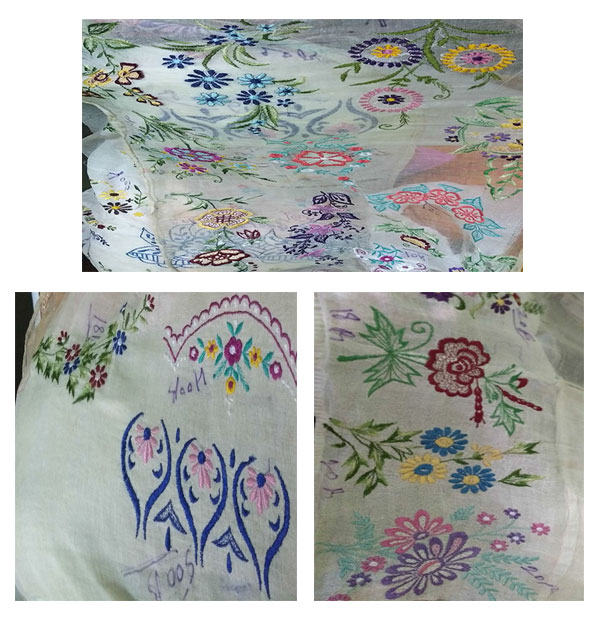
Image 12: Young Gita (middle) and her siblings in a studio in Burma. Photograph by Pratim Das, 17
Image 13: Gita Bose and her mother talking passionately about their life in Burma. Photograph by Pratim Das, 17 September 2018
For some repatriates, memories of old times are not enough to sustain the umbilical cord with Burma; they need to live and feel Burma every day. To stay in touch with the cultural life of Burma, they continue to acquire cultural objects from Burma: those who can visit Burma bring these themselves; some get them via others who visit Burma. It can be an idol of Lord Buddha, a portable movie player, currency notes, etc. These objects and articles help them to immerse themselves in the present cultural life of Burma. These symbolise continuation with the culture they left behind years ago. We encountered several such objects while interviewing the few families based in Ghola.
Repatriates as a Community
The repatriates we interviewed came to India in the 1960s, 70s, and 80s after their families had spent decades, some even a century in Burma. Some families knew each other even before they started living in these colonies of West Bengal. Some families were related or friends before coming to India, while some became acquainted after settling in the various colonies. Each has its own unique story to tell, but collectively their narratives can be stitched in the same frame. They had developed a hybrid culture in Burma, which combined elements of culture that their forefathers carried with them from India and what they adopted in Burma. With time, they developed their roots in Burma, and after returning to India, they keep remembering Burma as their homeland. In this context, Bhabha’s concept of ‘cultural hybridity’ is relevant that describes migrants’ position as in-between cultures and how migrants’ memories evoke a hybrid belonging (Bhabha 1996).
Hence, it is not surprising that during the fieldwork, we could observe how the repatriate residents of the Kamarhati Burma colony, Bonorini Abasan, and Ghola rely on their shared relationships to create a new identity that is influenced by both the culture of the host locality and the culture in which they grew up in Burma. These repatriates form among themselves social, cultural, political, and marital ties that bind them in an invisible thread. This thread helps them create a community with its own flavour. Even if their host society is somewhat reluctant to accept them, this thread helps them survive in a hostile climate.
However, this solidarity is not without its tensions. We heard many of them expressing grievances about their fellow repatriates. They believe that if all Kamarhati repatriates had shown solidarity and fought for their rights, they wouldn’t have faced yet another uprooting – the move from Kamarhati to Bonorini. Many also complained about how some families became owners of more than one apartment where others could not get even a single apartment.
Such tensions around material loss and gain notwithstanding, the threads that bind them are diverse and overwhelming. For example, one memory shared across the repatriates is that of eminent Indian nationalist figures, especially Netaji Subhash Chandra Bose. Netaji, as he was fondly called, took up the leadership of the Indian National Army (INA) in 1943. His presence attracted many Indians living in various parts of South East Asia, and some joined him in his endeavour to free India from British colonial rule (Bose and Bose 2002, 113). The INA had its units based in Burma, and the Indians living in Burma got very much involved with Bose and his army. Living on distant lands, they too dreamt of a free India. Netaji and INA’s military efforts for freedom connected the Indians or people of Indian origin living in Burma to their homeland, although many of them had never had set sight on India all their life. Netaji helped these Indians retain a sense of Indian identity while living in Burma. One of our respondents from the Kamarhati Burma colony (who wished to remain anonymous) was a young member of the INA and recollected meeting Netaji in Burma. Some repatriates proudly showed us artefacts of the INA of that period they had brought from Burma. As Netaji was the connecting thread to their estranged homeland while they were living in Burma, now the memory of Netaji and his INA is a connecting thread to Burma and those days they miss and recall with great fondness. Evidently, subjectivities of one’s ethnicity are influenced by migration and its memories, spatially and temporally, and, in turn, create challenges about an individual’s identity and sense of belonging.
Image 14: An old postcard showing the INA Training School in Rangoon (found in the collection of a resident at the Kamarhati Burma Colony). Photograph by Pratim Das, 20 September 2018
Image 15: An old picture of INA members and other dignitaries (from the collection of a resident at the Kamarhati Burma Colony). Photograph by Pratim Das, 20 September 2018
An opinion commonly shared by both men and women repatriates is that women had greater freedom in Burma. Women could live with fewer restrictions and felt safer. Pakhi di observed that she could pursue sports with ease in Burma, but she had to stop these pursuits after shifting to India. The trophies, awards, and certificates that Pakhi di has preserved carefully act as a reminder of those days of freedom when she could wear her favourite longyi and bend her body to her own will; now, she needs to wear a spinal support, and the sari has replaced the longyi.
Several others we interviewed complained about not being able to wear the Burmese dress in India. It reinforced our sense of how a dress can affect one’s sense of identity. Some of them spoke about how comfortable the longyi is, compared to the attire they need to wear now. While traditional clothing items belong to a particular time and place, they accompany migrants wherever they go – both as markers of memory and identity. The longyi then is not only a reminder of Burma but also creates a new identity – or rather, extends the old identity into a new place. They are now the repositories where the wearer’s experience is stored over time; as Walter Benjamin points out, ‘fashion’s dialectical relation to time: the present always contains the past’ (Toussaint and Smelik 2017). Such clothes represent the simultaneity of the migration of memory and the memory of migration. This is true for all material objects that carry the mark of their migration.
Image 16: An elderly couple of Bonorini Abasan of Bonhooghly, North 24 Paraganas. in the Burmese longyi. Photograph by Pratim Das, 20 September 2020
Conclusion
his paper tried to show how memories link space, time, and human actions that can provide a powerful peg in migration studies. Documenting the memories and narratives of Burmese repatriates to India helped us look at the complex questions of home, belonging, cultural practices, assimilation/integration, identity, livelihoods, etc. from their perspective. Without denying the usefulness of archival material on the repatriation of migrants to India (which are quite limited), we privileged documenting memory to present a parallel narrative that deals with both the physical and subjective world of repatriates in relation to their conception of home and belonging. In this way, these repatriate memories attempt to historicise the re- migration of ‘Indian Burmese’ to Bengal, characterised by their longing for their ‘homeland’ Burma and keeping alive its cultural markers such as food, taste, smell, dress, etc. than taking comfort in the fact they are back to their original land. The complete history of repatriation from Burma to India cannot be fully understood without considering the memories of these repatriates.
The study has clearly shown how the condition of the repatriates in Burma colonies is deplorable and how many are still struggling for a proper livelihood. Only a small section of them have received proper accommodation. But even in difficult circumstances, they have not forgotten their lives and days in Burma, and they are still trying to preserve their acquired homeland’s (Burmese) identity. The analysis of the repatriate narratives of Burma colonies provided a departure from the grand narratives of repatriation concerning Burma. Besides, it traced the cultural memory and sense of nostalgia of Burmese repatriates across generations.
[Note: This paper is based on research carried out under the UGC-UPE-II project entitled ‘South East Asia: Colony and Beyond (Reading Critical Geo-Politics and Bengali Polysystem)’, Department of Comparative Indian Language and Literature, University of Calcutta (2017– 20).]
Notes
1. The Republic of the Union of Myanmar was earlier known as Burma. The name Burma is still used by many people all over the world. As the people we interviewed mostly referred to Myanmar as Burma, we have used Burma for both the modern-day nation of Myanmar as well as British Burma.
2. The British colony of Burma had been a part of India since 1824. Burma was annexed by India soon after the British victory in the Anglo-Burmese War. In 1937, Burma officially seceded from India.
3. The Cooperative Society was established by Lady Abala Bose, wife of the scientist Jagadish Chandra Bose. Others associated with it included Bina Das, who ran the Society, and Lady Ranu Mukherjee, wife of the eminent industrialist Sir Biren Mukherjee and a great patron of arts (she was considered one of the muses of Nobel Laureate Rabindranath Tagore).
4. The commonly used term for electric rickshaws; they are used as an alternative to hand-pulled rickshaws or auto rickshaws. This form of transportation is very popular in various countries of Asia.
5. ‘di’ is an expression used for an elder sister or someone who is treated like that out of respect. The full word is ‘didi’.
6. ‘Proust effect’ is attributed to the French author Marcel Proust (1871-1922), who, in his celebrated work, In Search of Lost Time, explored the nature of sense memories. In his view, the power of smell evokes memories and emotions. He defines the effect as “Involuntary, sensory-induced, vivid and emotional reliving of events from the past.”
References
Bhabha, Homi K. 1996. “Culture’s in-Between.” In Stuart Hall and Paul Du Gay (eds), Questions of Cultural Identity, 53-60. London/New Delhi: Sage.
Bose, Sisir Kumar, and Sugata Bose.2002. Azad Hind: Writings and Speeches, 1941-1943. Delhi: Permanent Black
Chaturvedi, Medha. 2015. ‘Indian Migrants in Myanmar: Emerging Trends and Challenges.’ https://www.mea.gov.in/images/pdf/Indian-Migrants-Myanmar.pdf.Accessed 1 October 2019.
Creet, Julia, and Andreas Kitzmann. 2010. Memory and Migration: Multidisciplinary Approaches to Memory Studies. Toronto: University of Toronto Press.
Department of Rehabilitation. 2005. Information Handbook under Right to Information Act. Report. Chennai: Director of Rehabilitation.
Egreteau, Renaud. 2013. ‘India’s Vanishing “Burma Colonies”. Repatriation, Urban Citizenship, and (De) Mobilisation of Indian Returnees from Burma (Myanmar) since the 1960s’. Recherche en sciences humaines sur l’Asie du Sud-Est 22: 11-34. https://doi.org/ 10.4000/moussons.2312
Holmes, Robert A. 1967. Burmese Domestic Policy: The Politics of Burmanization. Asian Survey. Vol. 7(3), pp. 188-197. https://www.jstor.org/stable/2642237
Hwa, Cheng Siok. 1965. “The Development of the Burmese Rice Industry in the Late Nineteenth Century.” Journal of Southeast Asian History 6(1): 67-80. http://www.jstor.org/stable/20067537
Lubina, Michal. 2016. Overshadowed by Kala: India-Burma Relations. Politeja. No. 40, Modern South Asia: A Space of Intercultural Dialogue (2016), pp. 435-454. https://www.jstor.org/stable/24920216
Mahanirban Calcutta Research Group. 2011. Collective Memories of Repatriates from Burma. Kolkata: Mahanirban Calcutta Research Group.
Mohan, Radha. 1955. Immigration Policy of Burma in Relation to India—A Brief Survey. The Indian Journal of Political Science. Vol. 16(2), pp. 165-170. https://www.jstor.org/stable/42743364
Mukhopadhyay, Umaprasad. 1965. Burma Muluke. Kolkata: Mitra o Ghosh Publishers Pvt. Ltd.
Nolan, Philip. 1888. Report on Emigration from Bengal to Burma and How to Promote It. Government Report. Calcutta: The Bengal Secretariat Press.
Sandoiu, Ana. 2020 (22 June). ‘Medical News Today.’ https://www.medicalnewstoday.com/. https://www.medicalnewstoday.com/articles/322579. Accessed 25 August 2020.
Toussaint, Lianne, and Anneke Smelik. 2017. ‘Material Memory in Hussein Chalayan’s Techno-Fashion.’ In Materializing Memory in Art and Popular Culture, edited by László Munteán, Liedeke Plate and Anneke Smelik, 89–105. London and New York: Routledge.
Woodward, William Harrison. 1907. A Short History of the Expansion of the British Empire 1500-1902. Cambridge: Cambridge University Press.

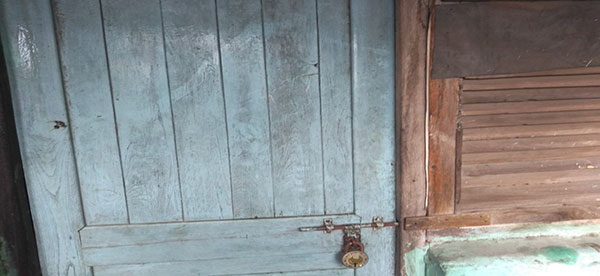
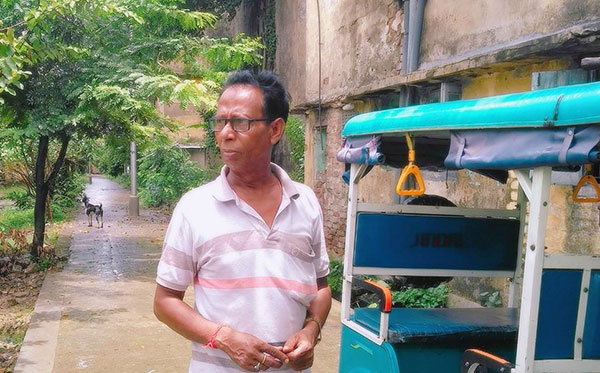
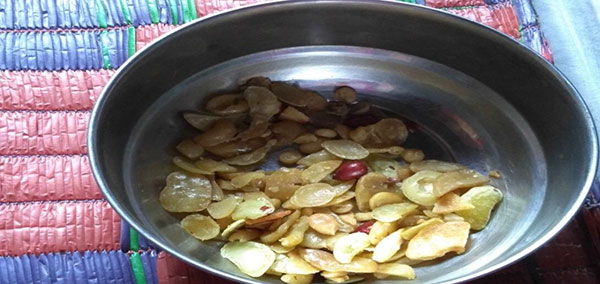
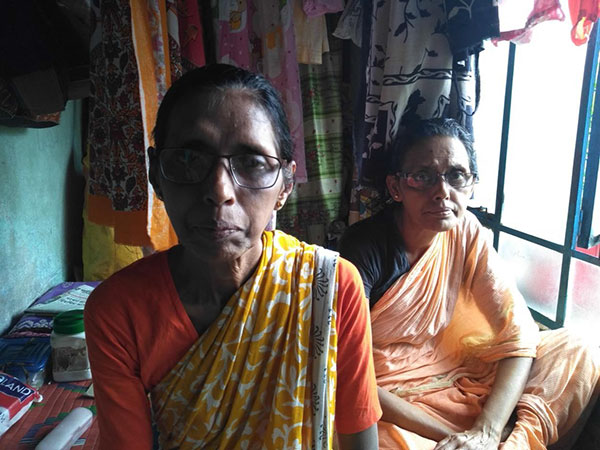
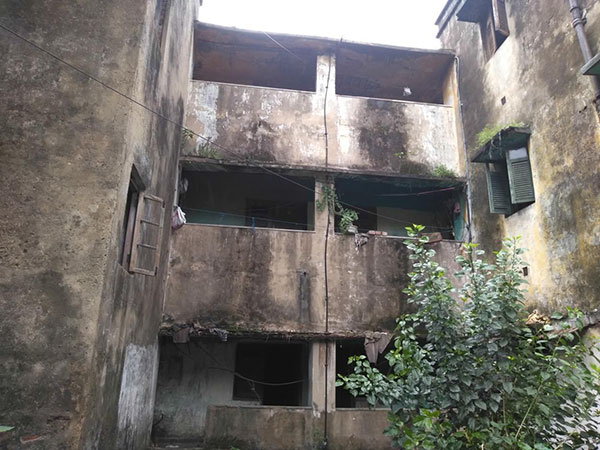
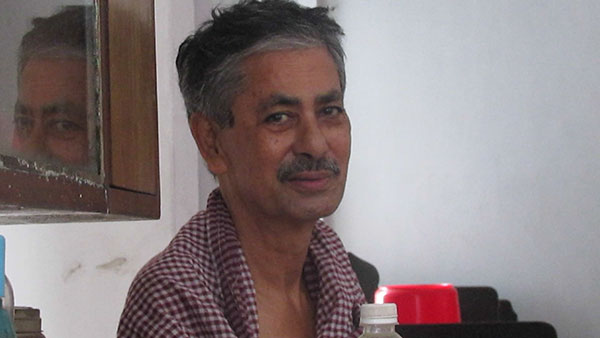

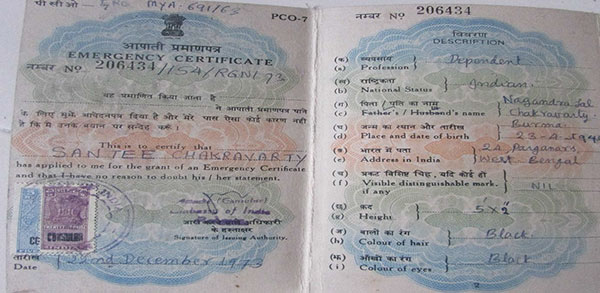
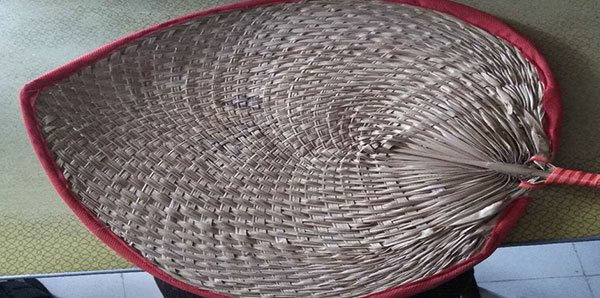

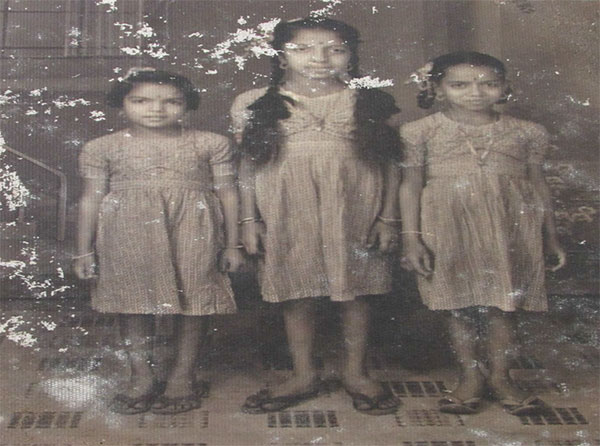
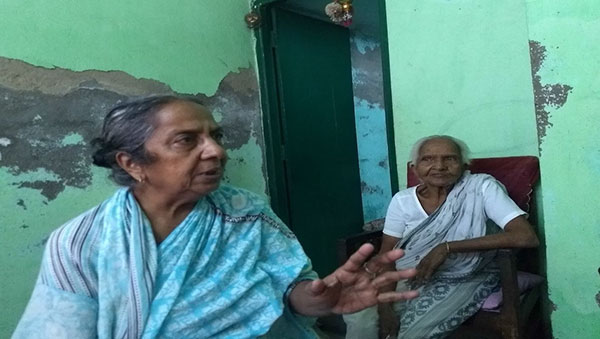
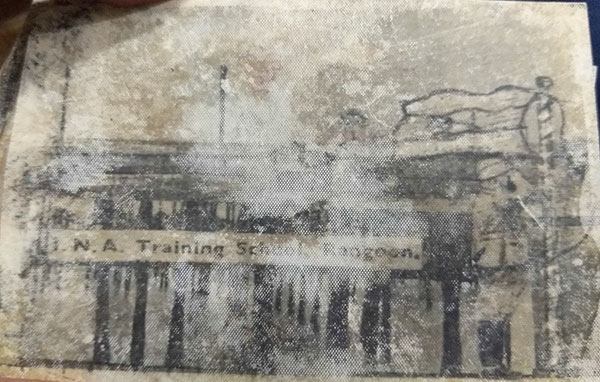
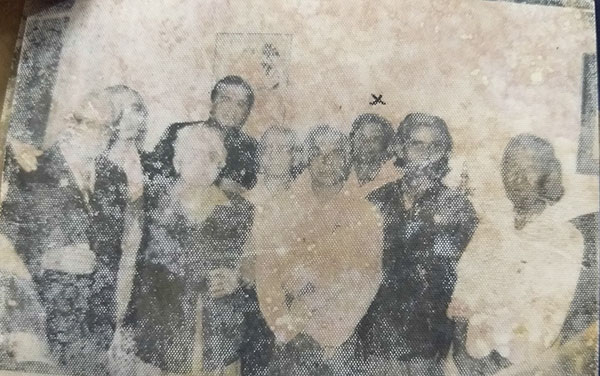
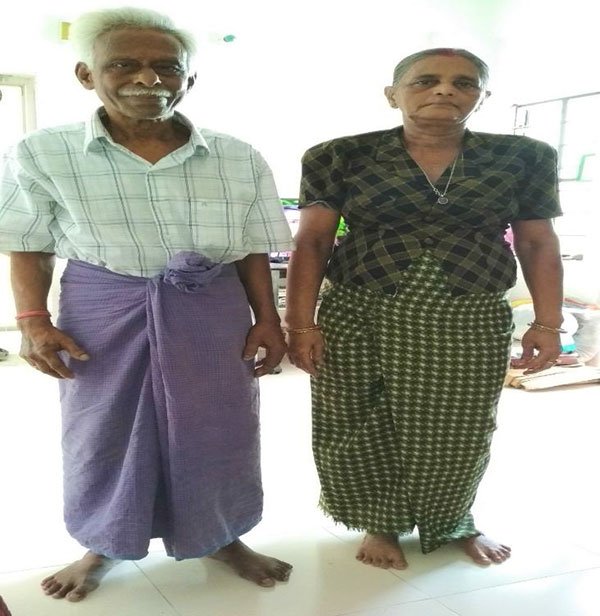

Leave a Comment
Comments are moderated and will be published only if found appropriate. Comments may take some time to appear.
Your email address will not be published. Required fields are marked with *